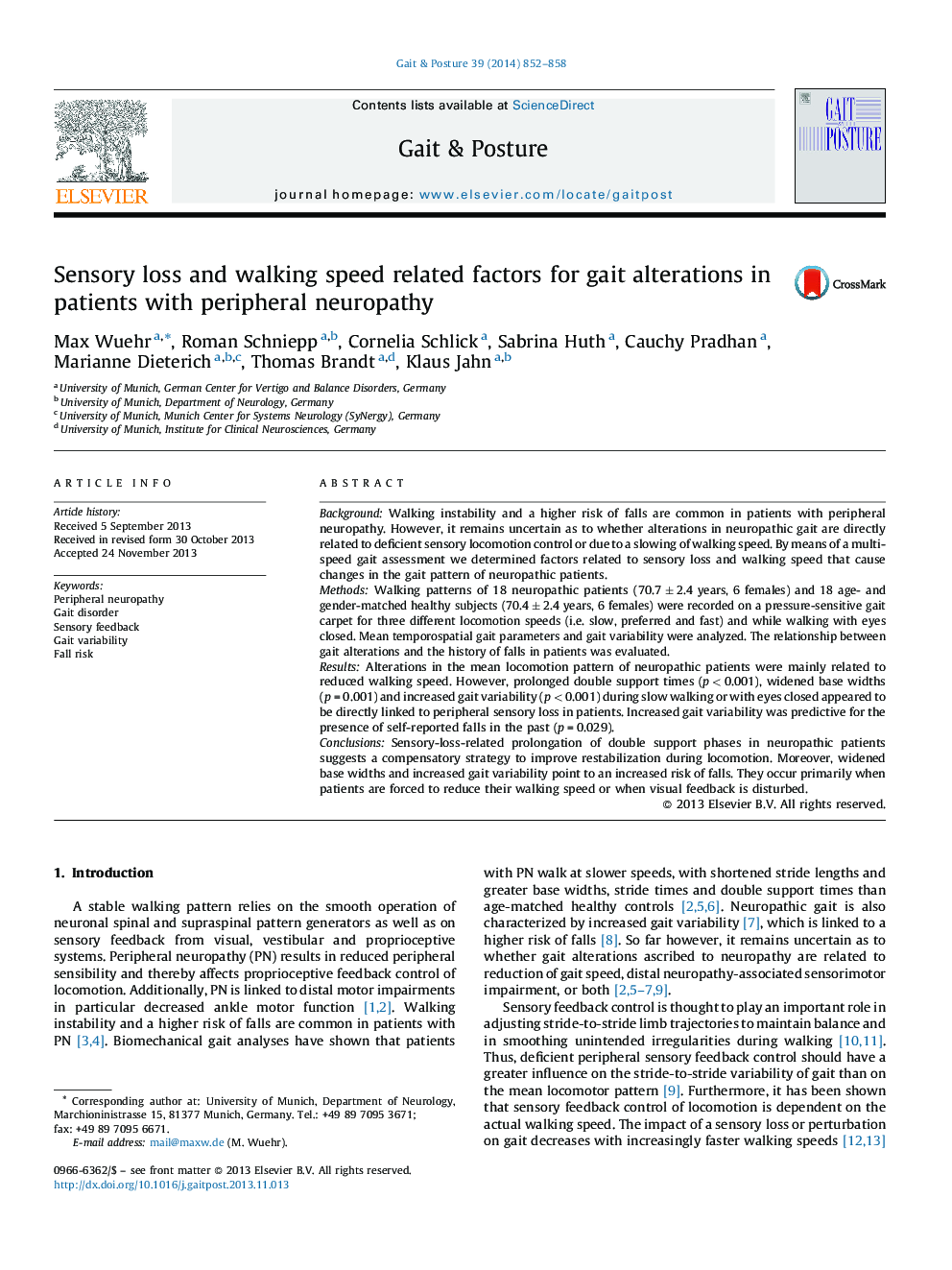| کد مقاله | کد نشریه | سال انتشار | مقاله انگلیسی | نسخه تمام متن |
|---|---|---|---|---|
| 6206556 | 1265648 | 2014 | 7 صفحه PDF | دانلود رایگان |
- We identify causal factors for gait changes in patients with peripheral neuropathy.
- Changes in the mean walking pattern are mainly due to a slowing of walking speed.
- Peripheral sensory loss has a direct effect on gait variability.
- This effect depends on the walking speed and occurs predominantly for slow walking.
- Gait variability while slow walking is associated to the fall status of patients.
BackgroundWalking instability and a higher risk of falls are common in patients with peripheral neuropathy. However, it remains uncertain as to whether alterations in neuropathic gait are directly related to deficient sensory locomotion control or due to a slowing of walking speed. By means of a multi-speed gait assessment we determined factors related to sensory loss and walking speed that cause changes in the gait pattern of neuropathic patients.MethodsWalking patterns of 18 neuropathic patients (70.7 ± 2.4 years, 6 females) and 18 age- and gender-matched healthy subjects (70.4 ± 2.4 years, 6 females) were recorded on a pressure-sensitive gait carpet for three different locomotion speeds (i.e. slow, preferred and fast) and while walking with eyes closed. Mean temporospatial gait parameters and gait variability were analyzed. The relationship between gait alterations and the history of falls in patients was evaluated.ResultsAlterations in the mean locomotion pattern of neuropathic patients were mainly related to reduced walking speed. However, prolonged double support times (p < 0.001), widened base widths (p = 0.001) and increased gait variability (p < 0.001) during slow walking or with eyes closed appeared to be directly linked to peripheral sensory loss in patients. Increased gait variability was predictive for the presence of self-reported falls in the past (p = 0.029).ConclusionsSensory-loss-related prolongation of double support phases in neuropathic patients suggests a compensatory strategy to improve restabilization during locomotion. Moreover, widened base widths and increased gait variability point to an increased risk of falls. They occur primarily when patients are forced to reduce their walking speed or when visual feedback is disturbed.
Journal: Gait & Posture - Volume 39, Issue 3, March 2014, Pages 852-858
